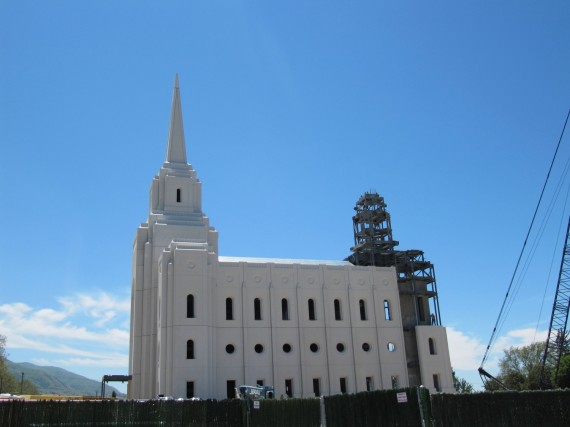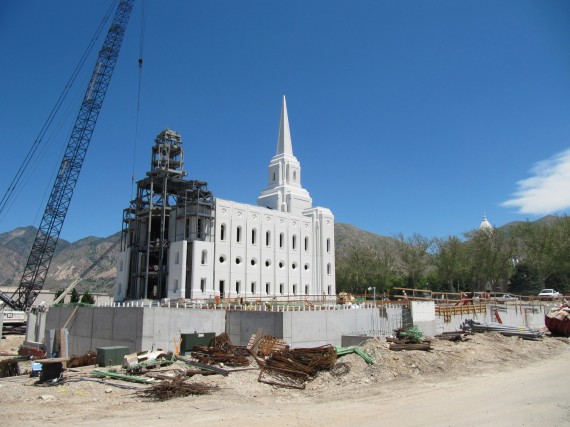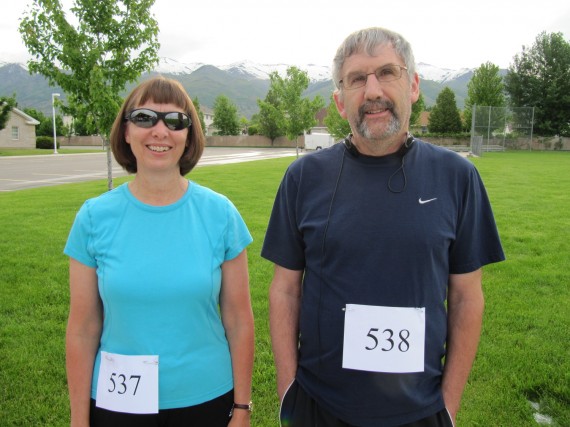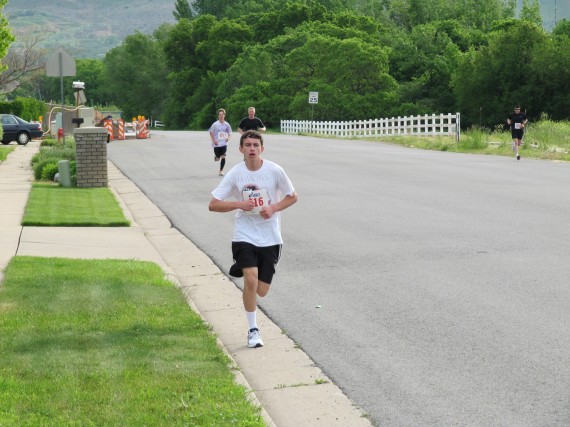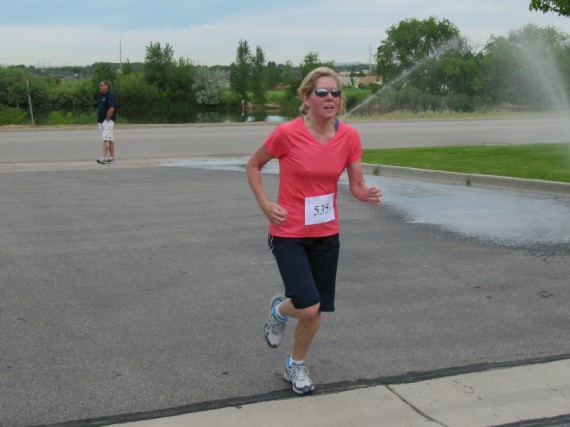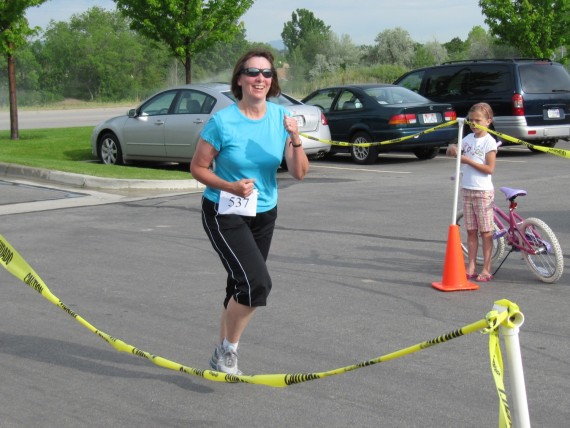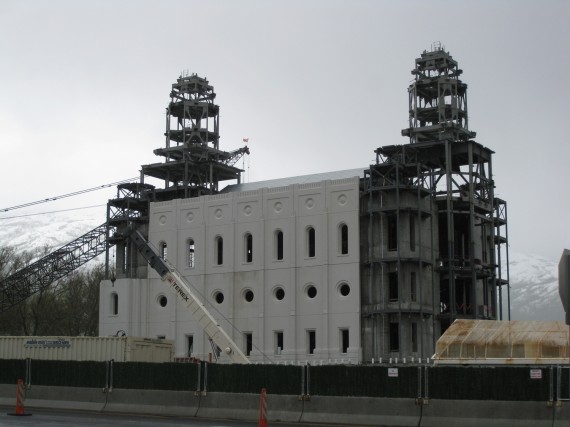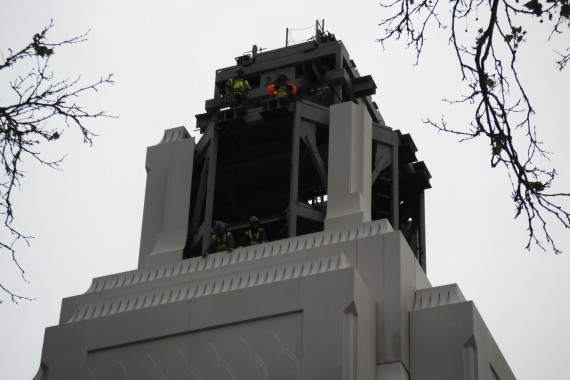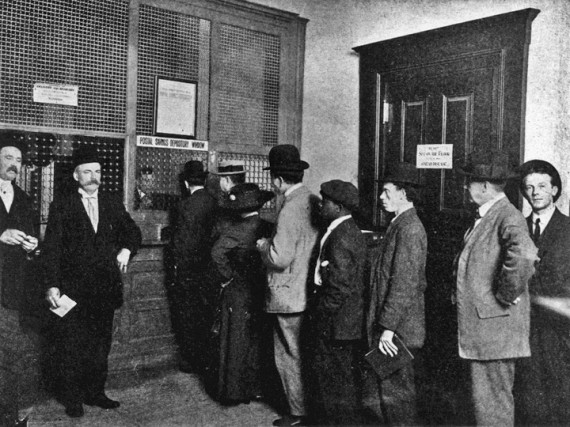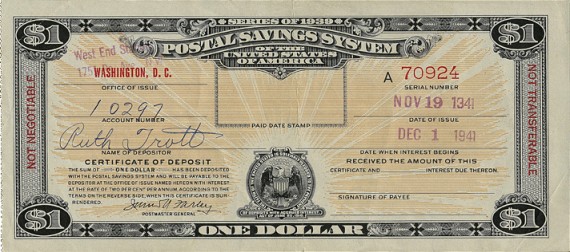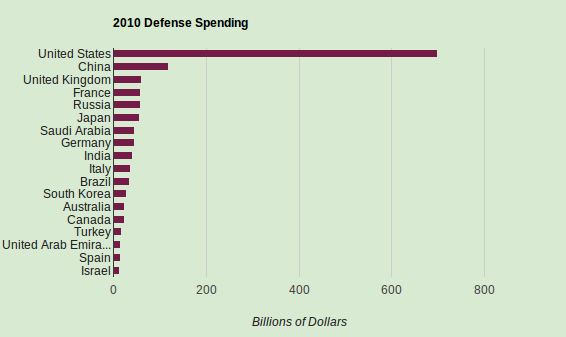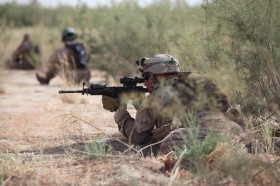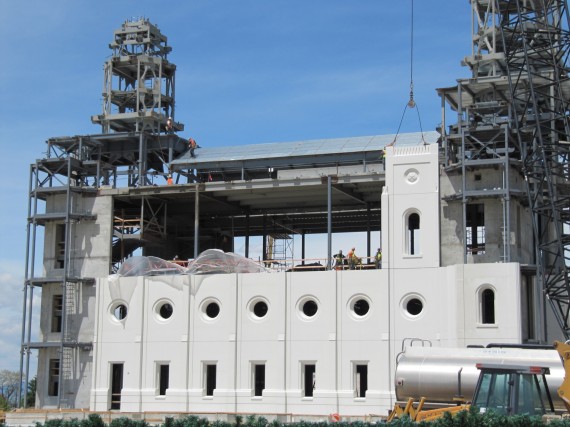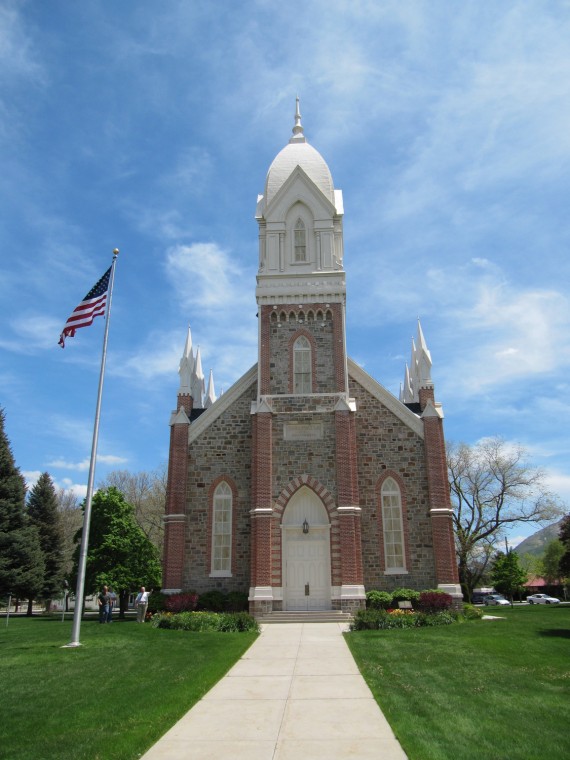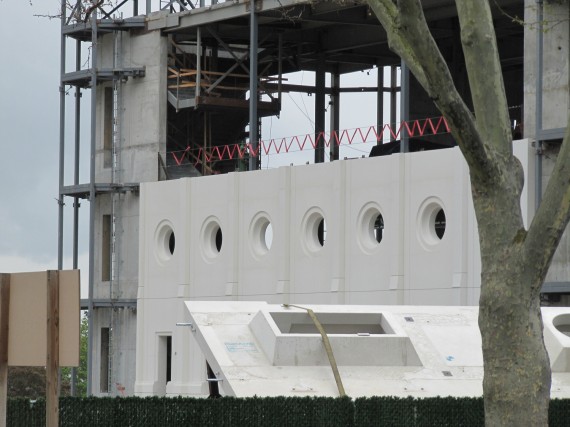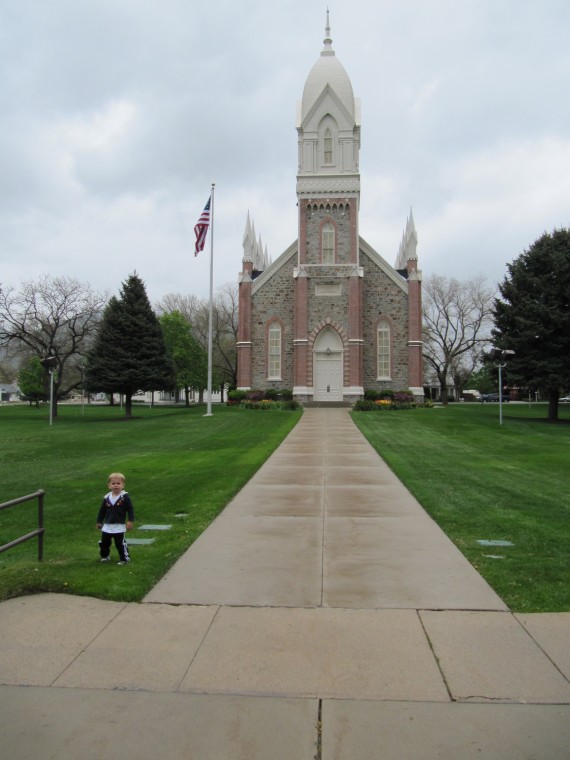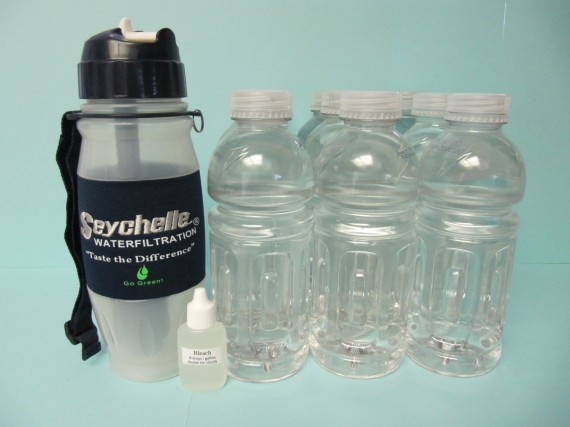
With three of my five children now married I asked them if once a month they would like to get together for a Joint Family Home Evening (JFHE). Everyone agreed so we all met for the first time this month for the purpose of putting together our 72 hour emergency kits. We decided to gradually build up the kits over a period of months.
Readers of my blog are welcome to add any words of advice as this is the first time most of us have tried to assemble a kit that one can actually carry any decent distance.
Three categories I have ranked in order of importance:
- Water
- Food
- Shelter
Water
At our first JFHE the focus was on water. For the kits we assembled:
- Nine 20 fluid ounce bottles of water
- One 2/3 fluid ounce bottle of bleach
- One water filtration bottle
Details
The nine bottles in the photograph are used 20 fluid ounce Gatorade bottles, previously collected, filled with water. This amounts to a total of 1.41 U.S. gallons, or just shy of a half a gallon a day, or three bottles a day, for drinking.
One bottle of bleach is approximately 390 drops. One needs eight drops of regular Clorox bleach to purify a gallon of water, or double that for cloudy water. Even in a worst case the yield will be 24 gallons of water.
I added a label to the bleach that reads “Bleach. 8 drops / gallon. double for cloudy.” This guards against the priesthood from accidentally bleaching the hair of the sick.
To Disinfect Water: If you need to purify water during an emergency, (and don’t have the means to boil it for 3–5 minutes), you can disinfect your water using bleach:
For clear water—add 8 drops (1/8 tsp.) of bleach per gallon of water
For cloudy water—add 16 drops (1/4 tsp.) of bleach per gallon of waterMix the solution thoroughly and let it stand for about 30 minutes before using it. Properly treated water should have a slight chlorine odor. If it doesn’t, repeat dosage and allow water to stand an additional 15 minutes. The treated water can be made drinkable by pouring it between clean containers several times. (Source: The Clorox Company)
Each family has a water filtration bottle. This can be used in conjunction with the bleach to improve the taste of the treated water. The other members of the family would have an additional bottle of bleach instead of the filtration bottle.
Cost
If supplies are already at hand, for example, tap water and household bleach, I count this as no cost.
- No cost — bottles of water, old backpack, bleach, labels
- 40 cents — empty Vial for Consecrated Oil (to carry our bleach)
- $16.50 — Water Filtration Bottle
The families will now have a month to assemble these items, or something similar. Next time we will address food, or at least the main meals.
Thoughts anyone?

